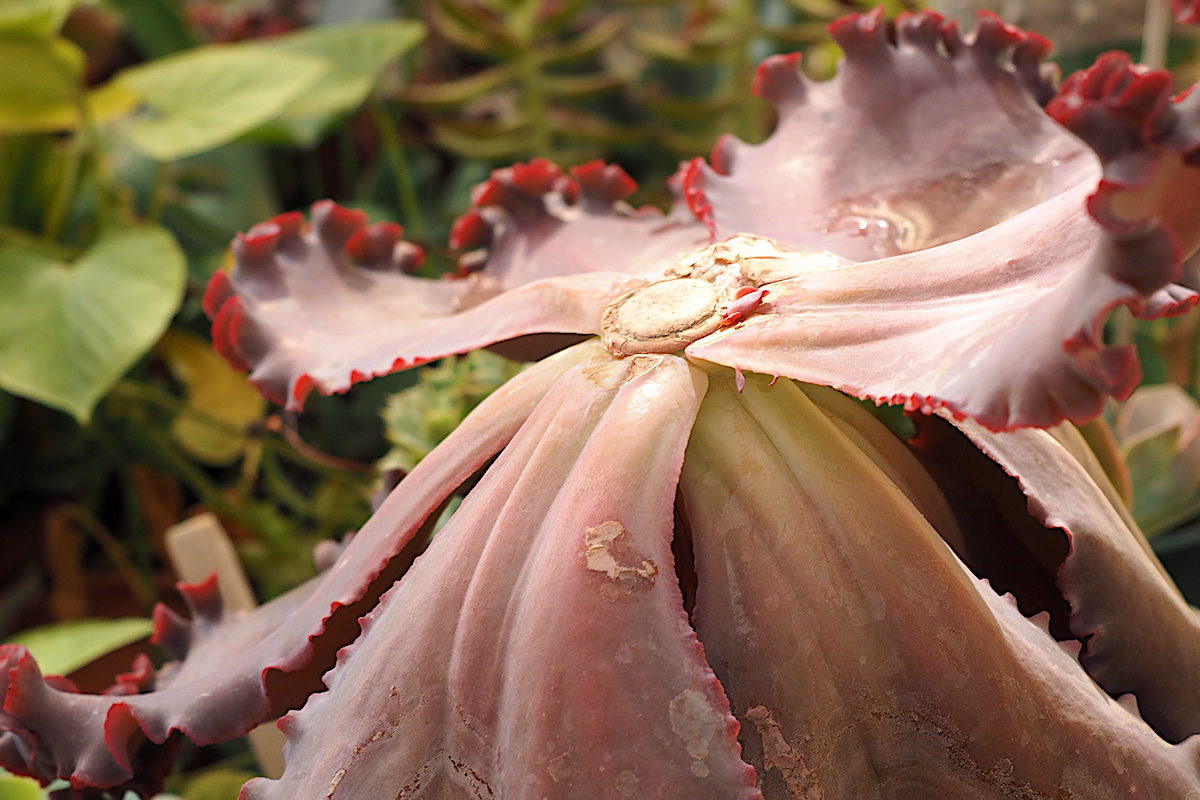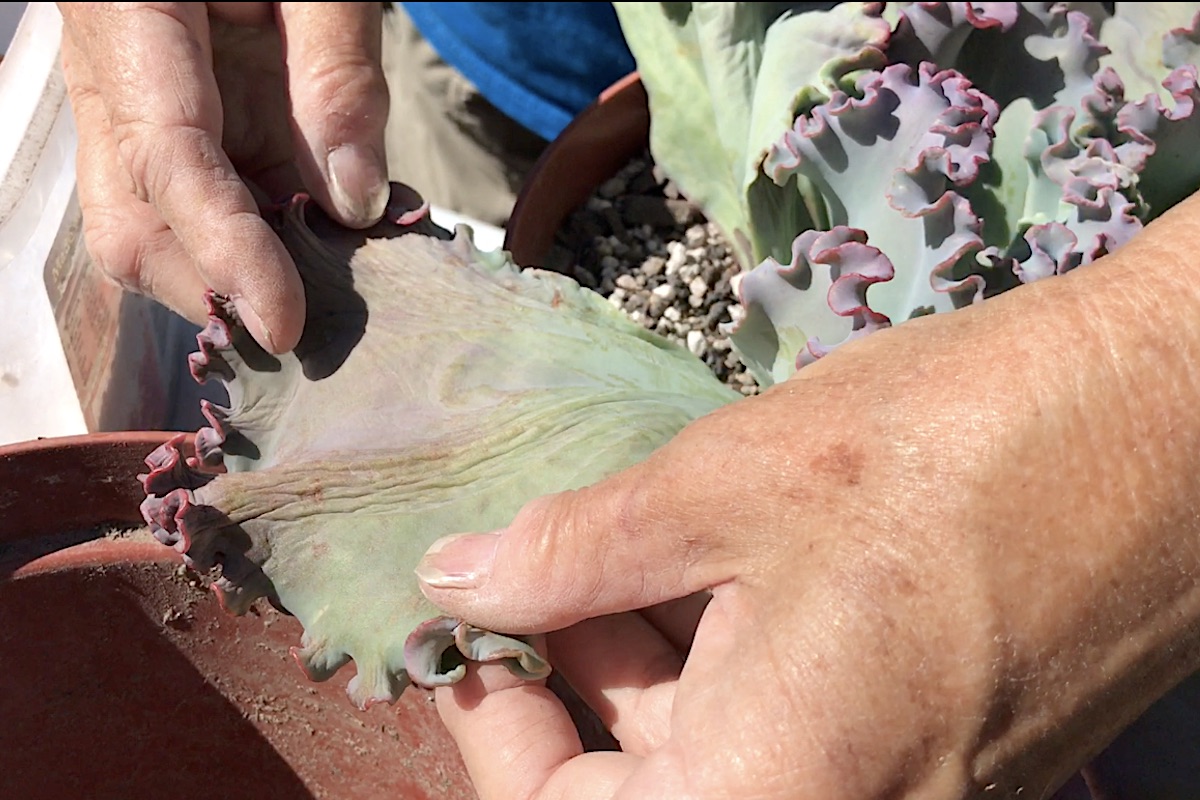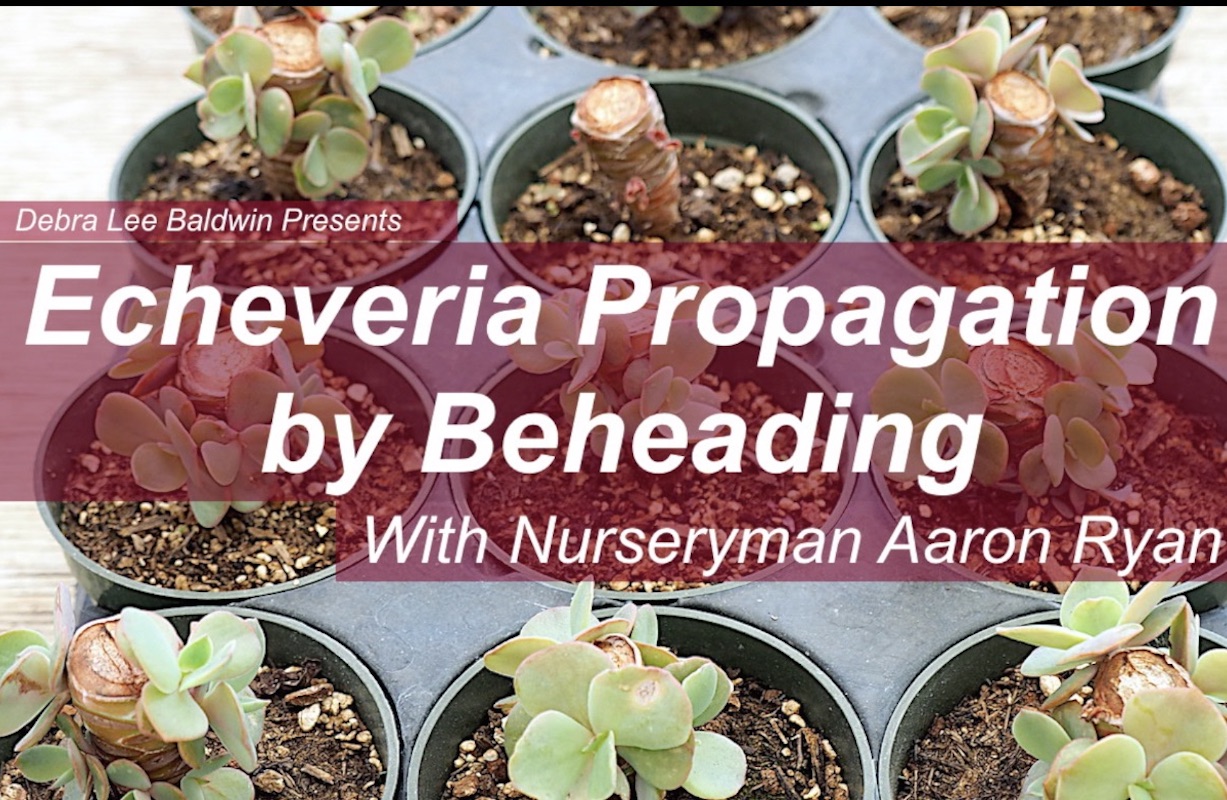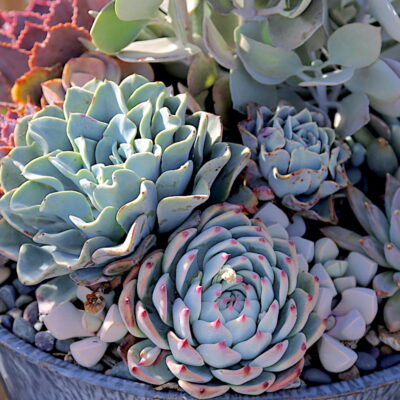Fancy ruffled echeverias---those large, flowerlike succulents---eventually need to be beheaded and the rosettes replanted. This is a bother, but it comes with a benefit: New clones will form on old, headless stalks. But not always. Here's how to ensure success when you behead and replant prized echeverias.
Photos below are from my videos: How to Slice and Re-root Echeverias, with expert Tina Zucker (4:16), Echeveria Propagation by Beheading, with Aaron Ryan (4:53) and How to Behead Ruffled Echeverias with Marylyn Henderson (3:56).
When to behead
The best time to behead and replant echeverias is when days are warm and nights cool. Generally, in spring and fall and not midsummer or midwinter (in most areas).
Tissue that produces new growth should be green. If it's brown and woody, it probably doesn't have adequate growth cells. So, don't wait forever to get around to beheading and replanting an awkwardly tall echeveria!

Upper stem of an echeveria, showing healed (callused) tissue where the head was removed.
How and where to slice
When beheading, cut straight across, using a sharp knife or clippers. It's surgery, so be clean, swift and smooth.
Slice the trunk an inch or two below the rosette or where there's a gap between leaf axils. It's not about creating an anchor for the cutting, but rather going after cells that are actively growing.
Check for disease
Exposed tissue, either at the bottom of the rosette or the top of the stem, should be firm. If it's hollow or darkened, it's likely weak or diseased. Cut lower (or higher) until you expose healthy tissue.

Aerial roots growing from the base of a beheaded rosette are bright pink. This head is ready to be planted.
Root formation
Experts prefer to let heads send roots into thin air before replanting them, because going directly into soil risks stem rot. Set the rosette atop an empty pot, with its lowest leaves resting on the rim, in bright shade. The rosette should be higher than the stem (not lying on its side) so nutrients and growth hormones flow downward.
Truncated rosettes may form aerial roots within days, weeks or months...or never. There's no certain way to know. In general, the faster the initial root production, the quicker the new plant will take off.
Soil
Plant newly rooted rosettes in potting soil mixed half-and-half with pumice.
Fertilizer
For a six-inch-diameter pot, mix in 1 tsp. Osmocote 14-14-14 slow-release fertilizer.*

It's normal for the lower leaves of beheaded rosettes to soften and wrinkle.
Watering
Rosettes that are cooling their heels atop empty pots don't need water. They draw on moisture in their leaves, which may become flaccid.
Before planting the rosette, peel away any spent lower leaves (if they come off easily).
Water the newly planted rosette as you would any potted succulent. Optional: Encourage root formation by setting the pot in a saucer of water for a few minutes---enough to moisten the soil about an inch or two up from the bottom. Roots grow more quickly when reaching downward for moisture. Avoid letting soil get soggy.
Light
Let newly planted echeverias rest in bright or dappled shade. Once firmly rooted, they'll require several hours of sun (ideally in the morning, when it's cool) to maintain their color and form.
Learn from the pros
Watch my YouTube videos of experts demonstrating how to behead and replant echeverias:

Click to view: Echeveria Propagation by Beheading
*affiliate link
How to Propagate Succulents
How to Propagate Succulents Learn the many ways to make more succulents from existing plants Ever wondered how to propagate a certain succulent? For example, lithops (living stones)…is it possible to take cuttings from those thick, molar-shaped leaves? How about ruffled echeverias…can a solitary rosette be made to offset? And stacked crassulas…what do you do when stems are tightly lined with…
Echeveria Info, Photos & Varieties
Echeveria Info, Photos & Varieties How to grow echeverias perfectly, plus an extensive gallery, all ID’d About Echeverias Here is expert advice to help you grow echeverias perfectly, with a gallery of 100+ beautiful, notable species and cultivars. Learn about the plants’ native habitat, optimal care, light and water requirements, flowering, soil, fertilizer, pests, and…
The post How to Behead and Replant Echeverias appeared first on Debra Lee Baldwin. Copyright © Debra Lee Baldwin.
from Debra Lee Baldwin https://ift.tt/2JNxgZ0
via IFTTT





No hay comentarios:
Publicar un comentario